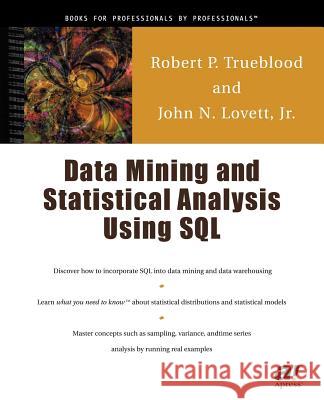Data Mining & Statistical Analysis Using SQL » książka
Data Mining & Statistical Analysis Using SQL
ISBN-13: 9781893115545 / Angielski / Miękka / 2001 / 410 str.
Where to Start xi Introduction WITH THE EXPLOSION IN computer technology during the past 30 years, there has been an accompanying proliferation of data. In many cases, however, companies have stacks of printed data or electronic databases that are of little use to them. This is often because those who could benefit the most from this information lack experience using the tools and techniques that could help them extract knowledge from the numbers. Now, more and more databases are also placed on the Internet. In fact, at no other time in history has more information been accessible to so many people. But how can it help us? Access to this information is important because data collected in the past may be used to predict future trends or to characterize a population from which a sample has been extracted. For example, a sample poll among 1,000 voters is often used to predict the outcome of an election. The latest computer-age term for this exercise is "data min- ing. " Statistics is the science (and art) of mining or analyzing such data. Like lawyers and physicians, statisticians have traditionally insulated themselves from the masses by using jargon and Greek symbols, thereby helping to ensure the need for their services.











